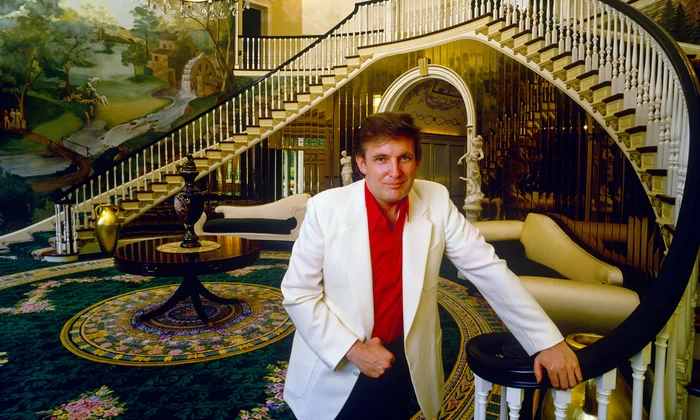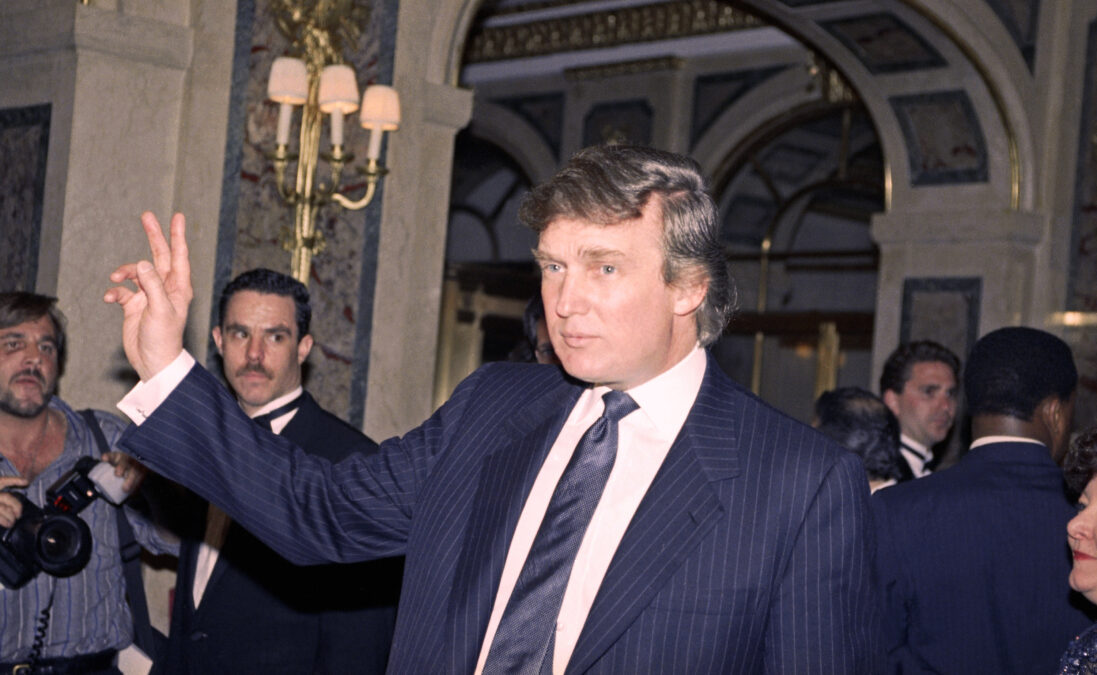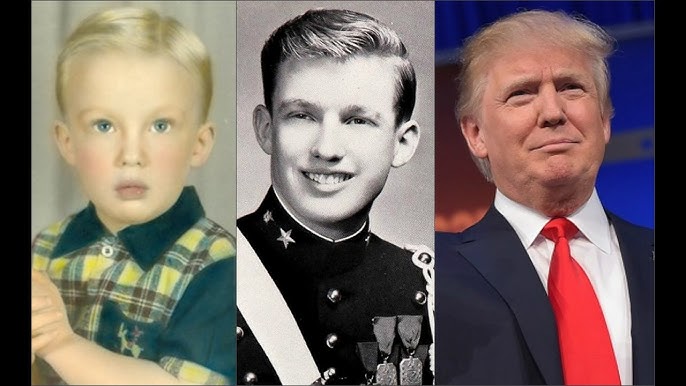The Formative Years: The public persona of Donald J. Trump is a global icon, a figure synonymous with towering skyscrapers, reality television dramatics, and a presidency that reshaped American politics. To understand the man he became, one must journey back to the origins, to the ambitious young man who was not yet a household name but was already meticulously crafting the blueprint for his future empire and identity. The story of young Donald Trump is not merely a biographical account; it is a case study in ambition, branding, and the complex inheritance of a formidable family legacy. It is a narrative set against the gritty, competitive backdrop of 1970s New York City, a time of both decay and incredible opportunity for those with the vision and audacity to seize it. His early years were a masterclass in self-creation, where the lessons of a shrewd father were absorbed, amplified, and projected onto a much larger stage. This period laid the foundational stones—both in terms of business acumen and personal philosophy—for everything that was to follow, establishing patterns of behavior, deal-making, and self-promotion that would define his life for decades to come.
Long before the political rallies and the marble halls of Washington, D.C., there was a different kind of education happening in the outer boroughs of New York and within the hallowed, if pragmatic, halls of a military academy. This education was not solely academic; it was visceral, practical, and intensely focused on the bottom line. The young Donald Trump was a student of power, influence, and perception, learning to navigate the world with a unique blend of confidence and aggression that was fostered from a very young age. He observed the mechanics of real estate, the art of negotiation, and the immense power of a name. These observations were not passive; they were internalized and became the core tenets of his own operational style. The transformation from a Queens kid to a Manhattan mogul was deliberate, calculated, and driven by an almost insatiable desire to eclipse the considerable success of his father. He didn’t just want to build buildings; he wanted to build monuments, and in doing so, build a legend that began with the ambitious young man stepping out of his father’s shadow and into the glare of the city’s spotlight.
The Foundations of Ambition: Family, Father, and a Queens Upbringing
To comprehend the drive that propelled Donald Trump, one must first look to his family, and particularly to his father, Fred Trump. The narrative of young Donald is inextricably linked to the world built by Fred Trump, a successful and relentless real estate developer in his own right. Fred’s business, which focused on constructing and managing middle-class apartments in the boroughs of Brooklyn, Queens, and Staten Island, provided the laboratory in which Donald would first observe the principles of business. Fred Trump was a product of the post-war boom, a man who understood value, efficiency, and scale. His projects, like the Trump Village in Coney Island, were massive in scope, designed to provide housing for thousands of families and generate steady, substantial cash flow. This environment was young Donald’s everyday reality; dinner table conversations likely revolved around construction costs, zoning laws, and tenant relations. It was a pragmatic, no-nonsense upbringing immersed in the tangible world of bricks, mortar, and profit margins.
Fred Trump’s influence on his son was profound and multifaceted. He was both a role model and a benchmark to surpass. From Fred, Donald learned the critical importance of leverage, of using other people’s money to finance ambitious projects. He learned the art of the deal from watching his father negotiate with contractors, suppliers, and government officials. Fred was also known for his toughness and his relentless work ethic, traits he actively sought to instill in his children. However, while Donald absorbed these core lessons, their personalities and ultimate aspirations diverged significantly. Fred was content to operate in the outer boroughs, building a solid, respectable, and immensely profitable business away from the glamour of Manhattan. His was a world of substance over style. Young Donald, however, looked across the East River with a different vision. He saw the glittering spires of Manhattan not just as buildings, but as symbols of ultimate success, power, and prestige. He admired the flash and grandeur of developers like William Zeckendorf, and he envisioned a future for himself that was not just about wealth, but about fame and recognition on the most coveted island in the world.
The Trump household, headed by Fred and his wife, Mary Anne MacLeod Trump, was a study in contrasts that also shaped the young man. Fred was the disciplined, driven German-American patriarch, while Mary Anne, an immigrant from Scotland, was often described as more reserved and domestic. Donald has often cited his mother as a source of “glamour,” noting her love for fine clothes and splendor, which may have subconsciously influenced his own later attraction to luxury and opulence. Growing up in the Jamaica Estates neighborhood of Queens, the Trump children lived a comfortable, upper-middle-class life, but it was not one of idle luxury. Fred believed in instilling a strong work ethic. During summers and school breaks, young Donald and his brother Fred Jr. would often work on their father’s construction sites, performing tasks ranging from collecting rent from tenants to hauling lumber and emptying trash. These experiences were designed to teach them the business from the ground up and to toughen them up. For Donald, it was an early education in the dynamics of power—interacting with superintendents, contractors, and tenants provided a firsthand look at management and the importance of projecting authority, lessons that would become central to his personal and professional identity.
Education and Early Influences: The New York Military Academy Years
Recognizing a need for more structure and discipline in his son’s life, Fred Trump made a pivotal decision when Donald was 13 years old: he sent him to the New York Military Academy (NYMA), a private boarding school in Cornwall-on-Hudson, New York. This move would prove to be a defining chapter in the development of young Donald Trump’s character. By many accounts, the young Trump was a spirited and sometimes rebellious child, and his father believed the strict, regimented environment of a military academy would channel his energy productively. NYMA was not a punitive measure so much as a strategic one—an investment in molding raw ambition into a more focused and formidable form. The academy’s ethos was built on discipline, hierarchy, respect for authority, and a competitive spirit, all values that resonated with Fred Trump’s own worldview and that would become deeply embedded in his son’s persona.
Life at NYMA was a world away from the comfortable streets of Jamaica Estates. It was characterized by early wake-up calls, uniform inspections, marching drills, and a rigid chain of command. For Donald, this environment was a crucible. He learned to navigate a system where achievement was rewarded and infractions were punished. He thrived on the competition, both athletically and socially. He became a standout athlete, first in baseball and later, more notably, as a star on the school’s football and soccer teams. His athletic prowess earned him recognition and respect, feeding his innate desire to win and be seen as a winner. More importantly, NYMA taught him the mechanics of leadership and the power of presentation. Rising to the rank of captain by his senior year, he was responsible for leading other cadets, giving him an early taste of command. The academy polished his natural confidence into a more authoritative demeanor. He learned the importance of projecting strength and confidence, lessons that went beyond the drill field and into the very core of his being.
The social dynamics of NYMA also played a crucial role. It was a school attended by the sons of wealthy and influential families, providing young Donald with a peer network that was both competitive and well-connected. It was here that he began to consciously refine his persona, understanding that how one presented oneself was almost as important as what one could do. The military bearing, the sharp appearance, the aura of authority—these were all tools he honed during these formative years. While he was a good student, he was by no means a scholarly intellectual; his education was practical and strategic. He was learning how to work within a system to achieve his goals, how to build a reputation, and how to leverage his strengths. The young man who graduated from NYMA in 1964 was not the same boy who had entered its gates. He was more disciplined, more self-assured, and armed with a set of social and leadership skills that would serve as his armor and his arsenal as he prepared to enter the wider world of business and, eventually, the concrete jungle of Manhattan real estate.
The Wharton Years: Forging a Business Mindset
Following his graduation from the New York Military Academy, Donald Trump’s educational path led him to Fordham University in the Bronx for two years before he set his sights on what he perceived as a more prestigious and suitable institution for his ambitions: the University of Pennsylvania’s Wharton School of Finance. Gaining admission to Wharton in the 1960s was a significant accomplishment, though the exact circumstances have often been part of his self-crafted lore. Wharton was, and remains, one of the most prestigious business schools in the world, and for a young man intent on becoming a major real estate developer, its name carried immense weight. Attending Wharton was a strategic move; it was about acquiring the pedigree and the credential that would legitimize his ambitions and set him apart from his father’s more provincial, Brooklyn-based operation. It was an early example of Trump understanding the power of a brand name and associating himself with it.
Trump’s time at Wharton was not marked by academic brilliance in the traditional sense. He was not a top student, nor was he deeply immersed in theoretical economics or complex financial modeling. By his own admission, his focus was elsewhere. He saw Wharton less as a place for scholarly enlightenment and more as a finishing school for his business education—a place to make connections and to confirm the practical lessons he had already learned from his father. He has described his classes as “easy” and has suggested that he already knew more about real estate than his professors, a claim that speaks to his characteristic confidence. His real education during these years continued to be his ongoing work in his father’s business. While other students were studying case studies, Trump was reportedly already involved in deals, commuting to Philadelphia but keeping his primary focus on the family empire in New York. He was absorbing the final, formal pieces of the puzzle: corporate finance, taxation, and the high-level language of business.
The true value of Wharton for young Donald Trump was symbolic. It provided him with a powerful narrative tool. For the rest of his career, he would consistently refer to himself as “a Wharton graduate,” using the credential as a shorthand for intelligence, acumen, and elite status. It was a key component in building his personal brand—the idea that he was not just a builder from Queens, but a savvy, Ivy League-educated businessman capable of operating at the highest levels. This period solidified his worldview, which was intensely focused on deals, leverage, and the bottom line. He graduated in 1968 with a Bachelor of Science in Economics, armed with a degree that signaled credibility and a mindset fully oriented toward expansion and aggressive growth. He left Philadelphia not as a theoretician, but as a pragmatist ready to apply his combined education—from his father’s job sites, the military academy, and the Wharton classroom—to the ultimate proving ground: Manhattan.
Apprenticeship Under Fred Trump: Learning the Art of the Deal
After graduating from Wharton, Donald Trump did not strike out on his own immediately. Instead, he returned to New York and entered a full-time apprenticeship within his father’s company, Elizabeth Trump & Son. This was a crucial period of practical application, where the theoretical knowledge from school met the street-smart, often cutthroat, realities of the New York real estate world. Fred Trump was a master of a specific niche: constructing large, federally subsidized housing projects for the middle class. His operations were a model of efficiency and cost-control. He owned his own lumberyard, employed non-union labor whenever possible, and meticulously managed every aspect of construction to maximize profit. Young Donald was immersed in this world, learning the granular details of the business—from securing zoning variances and government financing to dealing with construction delays and tenant complaints. It was an invaluable education in the mechanics of large-scale project management.
However, it became increasingly clear that Donald’s vision extended far beyond the boundaries of his father’s empire. While he respected Fred’s success and financial acumen, he found the work aesthetically and ambitionally lacking. He was not interested in building functional, brick-faced apartment complexes in Brooklyn. He was drawn to the glamour, prestige, and vastly larger financial stakes of Manhattan development. His father’s world was one of substance; Donald’s nascent vision was one of spectacle. During this apprenticeship, he began to test his own ideas and negotiate his own, smaller deals, always with the backing and financial safety net of his father’s organization. One of his first independent ventures involved the Swifton Village apartment complex in Cincinnati, Ohio, which he and his father acquired, renovated, and sold for a significant profit. This deal, while still in the style of Fred Trump, gave Donald a taste of executing his own strategy and reaping the rewards.
The dynamic between father and son during this period was complex. Fred was undoubtedly a mentor, but he also served as a bank and a backstop. He provided the capital and credibility that allowed young Donald to take calculated risks. This safety net was a critical advantage that many other aspiring developers did not have. It allowed Donald to operate with a degree of confidence and aggression that might otherwise have been fatal. He could pursue bold deals knowing that failure, while not desirable, would not be catastrophic. This period was less about Donald being a passive student and more about him being a junior partner with growing autonomy. He was absorbing his father’s toughness and negotiating tactics while simultaneously developing his own flair for the dramatic and his ambition for a much bigger stage. The apprenticeship was the final polishing of his skills before he embarked on his most audacious project yet: conquering Manhattan and building a name for himself that would eventually eclipse his father’s.
The Manhattan Gambit: Penn Central and the Commodore Hotel
The true launch of Donald Trump’s independent legend began with his relentless focus on Manhattan. While his father’s business was robust and profitable, it was geographically and symbolically distant from the epicenter of global power and prestige. Young Donald Trump understood that to become a major player, he needed a presence on the island, and he needed a project that would announce his arrival in the most spectacular fashion. His opportunity emerged from the urban decay and financial turmoil of 1970s New York City. The Penn Central Railroad, once a titan of industry, had gone bankrupt, and among its vast assets were huge swathes of dilapidated real estate, including rail yards on the West Side of Manhattan and, most intriguingly, the decaying Commodore Hotel adjacent to Grand Central Terminal. While others saw blight and hopelessness, Trump saw potential and opportunity on a grand scale.
The Commodore Hotel project became his obsession and his masterstroke. The hotel was a failing eyesore, losing money and covered in grime. To most developers, it was a toxic asset. Trump’s vision, however, was breathtaking in its audacity. He didn’t just want to renovate it; he envisioned a gleaming, modern, glass-sheathed luxury hotel that would serve as a beacon of revival for a struggling city. The scale of the ambition was matched only by the complexity of the deal. It required navigating a minefield of challenges: negotiating with the bankrupt Penn Central, securing unprecedented tax abatements from the city government, which was desperate for investment, and finding a major hotel operator willing to attach its name to such a risky venture. This is where young Donald Trump’s unique combination of skills came to the forefront: his bold vision, his relentless persistence, his understanding of political leverage, and his innate sense of showmanship.
The deal-making process for the Commodore was a multi-year marathon that showcased Trump’s style. He courted city officials, most notably the powerful Mayor Abe Beame, and framed the project not as a handout to a developer but as a vital job-creating engine for New York that would generate much-needed tax revenue in the long term. He successfully secured a 40-year tax abatement, a controversial but critical component that made the project financially viable. He then landed the partnership of the Hyatt Hotel Corporation, which did not have a flagship presence in New York and was eager for one. To finance the construction, he negotiated with numerous banks, using the city’s tax break and Hyatt’s management as leverage. The project was a Rubik’s Cube of financial and political engineering, and Trump proved adept at twisting the pieces into place. When the new Grand Hyatt Hotel opened in 1980, it was a triumph. It was not just a successful real estate project; it was a powerful symbol. It symbolized Trump’s arrival as a major force in New York, his ability to get big things done where others had failed, and it established the template for all his future deals: grandiose vision, complex financial structuring, government incentives, and relentless self-promotion. The $110 million transformation was his true birth as “Donald Trump,” the master developer.

Building the Brand: Trump Tower and the Cult of Luxury
With the success of the Grand Hyatt solidifying his reputation, Donald Trump was no longer just a successful developer; he was a rising star. However, his next project would transcend real estate and become the ultimate physical manifestation of his personal brand: Trump Tower on Fifth Avenue. If the Grand Hyatt was about proving his capability, Trump Tower was about cementing his legacy and creating an icon. Announced in 1978 and completed in 1983, the 58-story mixed-use skyscraper was conceived as a monument to luxury, success, and the Trump name itself. It was more than a building; it was a statement. Its prime location on Fifth Avenue, one of the most famous shopping streets in the world, was deliberately chosen to associate the Trump name with the pinnacle of prestige and commerce. The tower was designed to be a vertical world of opulence, housing high-end retail stores, corporate offices, and ultra-luxurious condominiums.
The construction of Trump Tower was itself a spectacle, embodying the bold and sometimes brutal tactics that characterized Trump’s approach. It involved the controversial demolition of the historic Bonwit Teller building, including its prized Art Deco sculptures, a move that drew significant criticism from preservationists but which Trump defended in the name of progress and cost. The building’s design, featuring a striking bronze glass facade and a breathtaking six-story atrium paved with pink Breccia Pernice marble and featuring an 80-foot waterfall, was unlike anything else in New York. It was designed to awe and impress, to create an environment so luxurious that simply being inside it conveyed status. The marketing of the condominiums was a revolution in real estate sales, targeting not just the wealthy but the famous and the elite. He sold an aspirational lifestyle, and people paid a premium to be associated with the powerful new Trump brand.
Trump Tower became the physical cornerstone of his identity. It housed his corporate headquarters, a penthouse home that was featured in magazines as the epitome of 1980s luxury, and a address that became synonymous with wealth and power. The building’s success was astronomical, both financially and symbolically. It established Trump as the master of high-stakes, high-profile development and proved his genius for marketing. He understood that he wasn’t just selling apartments; he was selling a dream. His name, emblazoned in massive bronze letters on the facade, was no longer just a surname; it was a luxury label. This period marked the full flowering of the persona that America would come to know: the flamboyant, confident, and boastful tycoon who lived in a golden tower on Fifth Avenue. He cultivated this image relentlessly through the media, becoming a fixture in gossip columns and business magazines, always ready with a quotable boast about his latest success. The young man from Queens had not only entered Manhattan; he had conquered a piece of its heart and stamped his name on it in the most indelible way possible.
The Media Maverick: Crafting a Public Persona in the 1980s
A critical, and often overlooked, aspect of young Donald Trump’s ascent was his masterful and instinctive understanding of the media. Long before the era of social media, Trump proved to be a genius at generating publicity, controlling his narrative, and using the press as a free megaphone to amplify his brand. He recognized that in New York City, perception was a currency as valuable as cash, and he spent it lavishly. He cultivated relationships with gossip columnists, particularly Liz Smith of the Daily News and Page Six of the New York Post, feeding them a steady stream of tips, boasts, and tantalizing details about his projects, his wealth, and his personal life. He understood the power of controversy, spectacle, and the bold quote, always giving reporters something juicy to print. He wasn’t just building buildings; he was building a myth.
This media strategy was calculated and highly effective. He would often exaggerate the scale of his projects or the figures involved, knowing that a grandiose claim made for a better headline. He engaged in public feuds with rivals and city officials, knowing that conflict generates ink. His marriage to Ivana Zelnickova, a glamorous former model, in 1977 added a new layer of celebrity to his story, and the couple became a staple of the society pages, embodying the glamour and excess of the 1980s. Trump’s persona was a carefully constructed character: the brilliant, ruthless, and fabulously wealthy young tycoon who could bend the world to his will. The media, eager for colorful copy in a pre-internet age, was a willing partner in this construction. He rarely shied away from an interview and was always ready to offer his opinion on any topic, establishing himself as a ubiquitous and recognizable figure far beyond the world of New York real estate.
His foray into book publishing with the 1987 release of The Art of the Deal, co-written with Tony Schwartz, was the capstone of this media strategy. The book was a phenomenal bestseller that codified his legend. It presented Trump not just as a successful businessman, but as a unique genius with an almost magical touch for making deals. It offered a compelling, behind-the-scenes look at his projects, filled with bravado and strategic advice. Whether entirely factual or not, the book solidified his image as the quintessential businessman of the era. It made him a national celebrity and a hero to aspiring entrepreneurs. This mastery of media was a powerful weapon that differentiated him from every other developer of his time. While they were focused on concrete and steel, Trump was focused on headlines and perception, understanding that a powerful brand could open doors, secure financing, and create a reality more potent than mere facts. This symbiotic relationship with the press, built in the 1970s and perfected in the 1980s, was a foundational practice that would define his future career in television and politics.
Beyond Real Estate: The Expanding Empire and Early Challenges
Flush with success from his real estate triumphs and his growing national fame, young Donald Trump began to expand his brand far beyond the confines of property development. The 1980s saw him venture into a diverse array of businesses, leveraging his name as a symbol of quality and success. He entered the casino industry with colossal projects in Atlantic City, New Jersey, which was then experiencing its own boom. He opened Trump Plaza Hotel and Casino in 1984, acquired Hilton’s nearly completed hotel-casino to open as Trump Castle in 1985, and then embarked on his most ambitious gambling venture yet, the $1 billion Taj Mahal, which opened in 1990. These projects were the apotheosis of his philosophy: they were the biggest, the brashest, and the most heavily leveraged, designed to dominate the market through sheer scale and spectacle.
He also moved into the airline business with the short-lived Trump Shuttle, an airline he created in 1989 by purchasing the Eastern Air Lines Shuttle fleet. He branded the planes with his name and offered luxury amenities, attempting to redefine air travel in the Northeast corridor. In the world of sports, he purchased the New Jersey Generals of the fledgling United States Football League (USFL), seeing it as both an investment and another platform for publicity. He famously lobbied for the league to move its season to the fall to directly compete with the NFL, a strategic gamble that ultimately contributed to the USFL’s collapse after it won an antitrust lawsuit against the NFL but was awarded only $3 in damages. These ventures demonstrated his boundless confidence and his belief that the Trump brand could be successfully applied to any industry.
However, this period of rapid expansion also sowed the seeds for significant challenges. The massive debt taken on to finance these projects, particularly the Taj Mahal and the Atlantic City properties, left his empire extremely vulnerable to economic downturns. His personal lifestyle and the upkeep of his assets, such as his massive yacht, the Trump Princess, and his airline, were incredibly costly. When the U.S. economy went into a recession in the early 1990s, the real estate and casino markets cratered. The highly leveraged Trump Organization could not service its enormous debt. By 1991, he was facing financial crisis, with his casinos heading for bankruptcy and his personal net worth plummeting. It was a dramatic fall from grace for the man who had seemed invincible just a few years prior. This crisis forced a dramatic restructuring of his debt with banks, who now held significant control over his assets and operations. It was a humbling period that tested his resilience and his deal-making skills in a entirely new way, fighting not for expansion but for survival.
The Legacy of the Young Mogul: Patterns for the Future
The story of young Donald Trump is the story of an identity under construction. The patterns, traits, and strategies he developed and honed during these formative decades did not disappear; they became the fundamental blueprint for his later life. His relentless drive for attention and mastery of media spectacle directly foreshadowed his career in reality television with The Apprentice, which resurrected his brand in the 2000s. The persona of the decisive, all-knowing boss who would famously declare “You’re fired!” was a direct extension of the confident, deal-making mogul he had crafted in the 1980s. The show was not a departure from his past but a perfect vehicle for it, allowing him to play a heightened version of himself for a new generation.
Furthermore, the political style he would later unleash upon the world was fully present in his early business career. His populist rhetoric, honed by years of talking to construction workers, tenants, and city officials, his us-against-them framing of deals, his attacks on rivals and critics, and his relentless self-promotion were all hallmarks of his business persona long before he descended the golden escalator in 2015. His campaign and presidency were run like a business, with a focus on loyalty, brand strength, and dramatic, disruptive action. The “America First” slogan echoed his business-first mentality. The negotiation tactics he described in The Art of the Deal—aiming high, using leverage, fighting back—were the same ones he promised to use on the world stage.

Ultimately, the journey of young Donald Trump from the avenues of Queens to the pinnacle of Manhattan society is a classic American narrative, but one with a uniquely modern twist. It is a story of ambition, inheritance, shrewd calculation, and an unparalleled understanding of the power of image. He was not just building buildings; from a very young age, he was building a character, a brand, and a legend. The confidence that bordered on arrogance, the appetite for risk, the fascination with grandeur, and the relentless pursuit of victory and validation were all cemented in these early years. Whether viewed as a brilliant innovator or a flawed provocateur, his impact is undeniable. The foundations laid by the young Donald Trump—in the shadow of his father, under the discipline of military school, through the deals in a crumbling New York, and within the glittering atrium of his own tower—created the figure who would forever change the landscapes of business, media, and ultimately, American politics.
The Formative Years
FAQs
Q: What was young Donald Trump’s relationship with his father, Fred Trump, really like?
A: It was complex and foundational. Fred Trump was undoubtedly his son’s most important mentor, providing him with a deep education in real estate, business, and a tough, competitive work ethic. Donald respected his father’s success and acumen. However, their visions diverged. Fred was content with his substantial but less glamorous empire in the outer boroughs, while Donald was intensely ambitious and drawn to the prestige and spotlight of Manhattan. Their relationship was a dynamic of both apprenticeship and a son’s desire to vastly surpass his father’s achievements.
Q: Did Donald Trump actually build his fortune completely by himself, or did he inherit it?
A: This is a central point of discussion. It is factually inaccurate to say he built it completely by himself. He started his career with immense advantages: a first-class business education from his father, a job in the family company, and, most crucially, access to significant financial capital and loans guaranteed by his father’s established wealth. His first major Manhattan project, the Commodore Hotel, relied on his father’s connections and financial backing. However, it is also reductive to say he merely inherited a fortune. He took the foundation provided by his father and leveraged it into a different kind of empire—one focused on high-profile, glamorous projects and personal branding on a scale Fred Trump never attempted. His success was a product of both inheritance and his own unique ambition and savvy.
Q: How did his time at the New York Military Academy (NYMA) influence him?
A: NYMA was a profoundly formative experience. It channeled his energy and instilled a sense of discipline, structure, and respect for hierarchy and authority. It fostered his competitive spirit through athletics, where he excelled. Most importantly, it taught him leadership and the importance of presentation and projecting confidence. The military bearing and authoritative demeanor he developed at NYMA became key components of his public persona for the rest of his life.
Q: What was the significance of the Grand Hyatt Hotel project?
A: The Grand Hyatt was his watershed moment. It was the project that proved he could succeed in Manhattan on his own terms. It demonstrated his ability to envision a transformative project, navigate incredibly complex deal-making involving bankrupt companies and city government, secure unprecedented tax breaks, and partner with a major corporation. Its success transformed him from a Queens developer with a famous name into a major force in New York City real estate and gave him the credibility and capital to pursue even more ambitious ventures like Trump Tower.
Q: Were there any major failures or setbacks in his early career before the 1990s?
A: His early career was marked by a string of successes that built upon each other. However, his venture with the USFL (United States Football League) is widely considered a major misstep. His strategy of aggressively challenging the NFL by moving the league’s season to the fall ultimately contributed to its collapse after it won a pyrrhic victory in an antitrust lawsuit. This showed that his aggressive, high-risk approach did not always lead to success and foreshadowed the larger financial troubles he would face in the early 1990s due to over-leverage.




